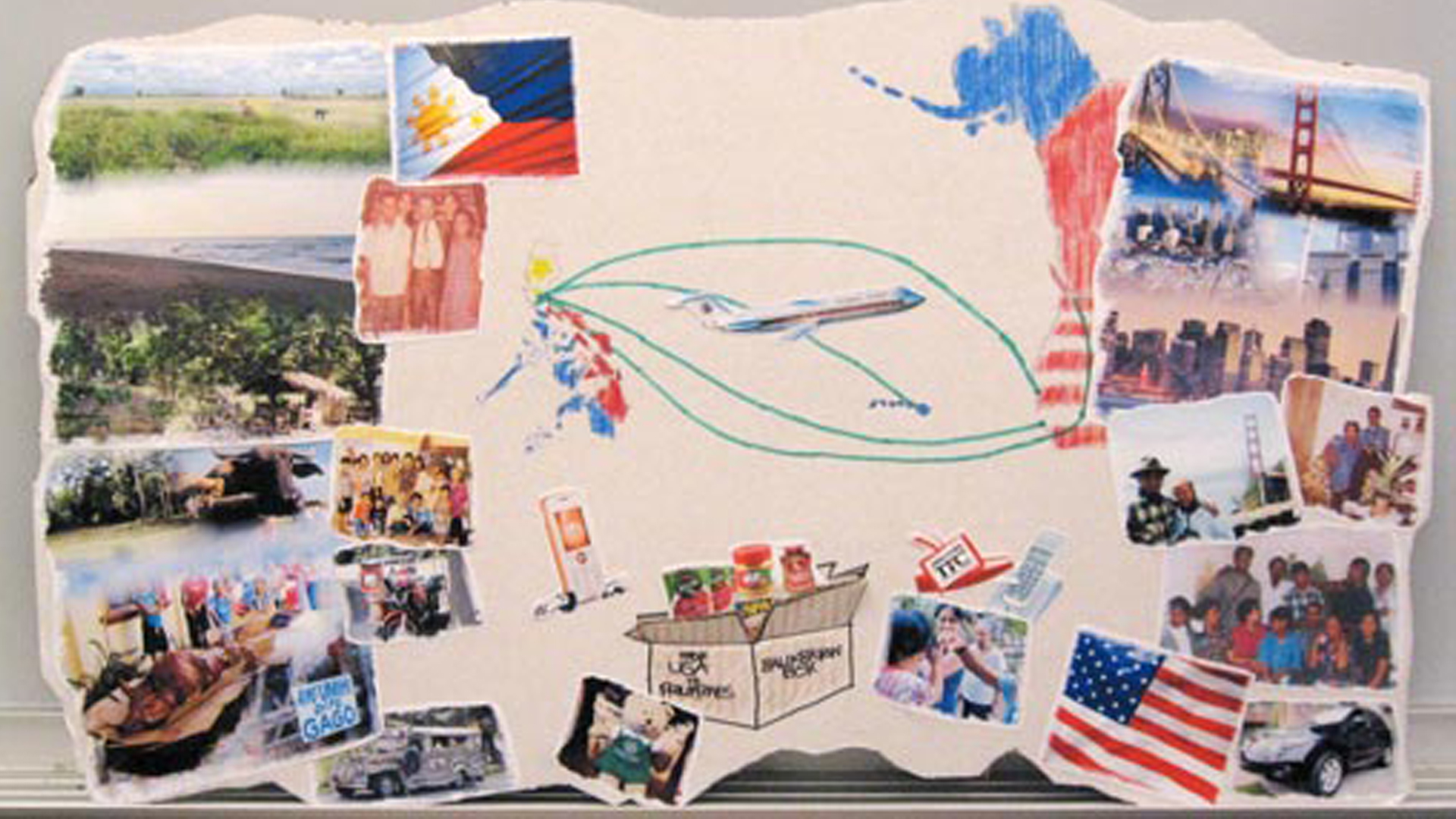
Continuing my throwback to my college Filipino-American Arts class, we reach my first project of the semester.
This first project discusses Filipino-American history. Being the first project, it had much simpler requirements than the other two. Most students did collages (including myself lol). But it still required hand-drawn or hand-made elements.
For my piece, I decided to talk about my family’s journey from the Philippines to the United States. I illustrated that with a rough map of the Philippines and the West Coast of the U.S. with a Philippine Airlines plane flying between them. On either side were photos of my family, our home, images of our vacations back to the Philippines and symbols of the life in the two countries.
At the center is a 3D balikbayan box filled with canned goods, something typical of Filipino immigrant families who send them back home to loved ones in the Philippines.
Here is a portion of my artist statement:

For my project, I wanted to focus on how Filipinos and Filipino-Americans bridge the literal gap and make connections between the Philippines and the United States. The different ways they connect can be applied to the Philippines and any other country in the world as well. The Philippines and the United States, specifically, have had a long and twisting history together. From the days of the Philippine Revolution to today’s immigration and Filipino veterans fighting for equal benefits, the 7,000 mile Pacific divide is made a little less wide by advances in communication, travel, and the never ending passing down of Filipino traditions.
The biggest part of my piece, I believe, is how these images illustrate the journey of my own family. Their dream, as with many Filipino immigrants, is to provide for a better life for their children and grandchildren. By all accounts, that dream has come true.
